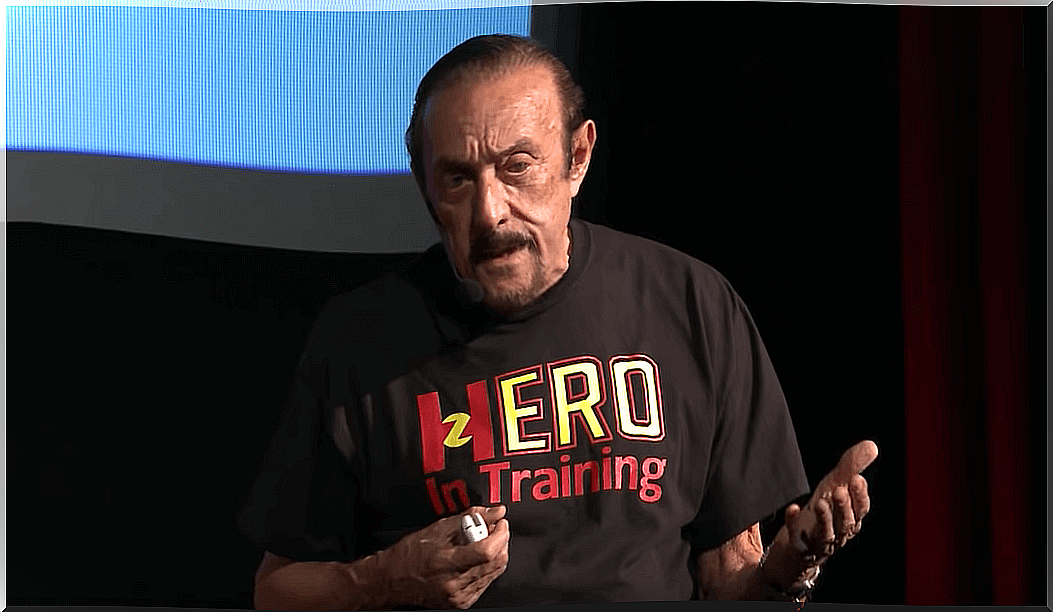Philip Zimbardo: Biography Of The Author Of The Lucifer Effect

Philip Zimbardo is a controversial social psychologist and researcher who made his name early. His study of the Stanford prison was only the germ of his interest in discovering why people transform in certain situations and behave in totally unexpected ways.
What are the reasons why a good person commits a heinous act? Why can an intelligent person do something totally absurd and irrational? These are the questions that this brilliant psychologist has devoted his entire life to. An investigation that paid off and there is no doubt that it found numerous answers.
His contributions to psychology have been tremendously significant. The effects that absolute control can have on people’s consciousness or the consequences of cult and group thinking were some of them.
He also became actively involved in the study of shyness, motivation, and human perspectives on the course of time. Join us to discover, as far as possible, one of the most controversial psychologists who, in turn, has contributed the most to contemporary studies.

Academic life
Philip Zimbardo was born in New York on March 23, 1933. We don’t have much information about his childhood, but we do know that he was a brilliant student. In 1954, he obtained a triple major in Psychology, Sociology, and Anthropology. Just a year later, he was earning his Ph.D. in Psychology from Yale University.
Upon completion of his studies, he served as a teacher for a brief period at Yale. However, he subsequently dropped out of Yale to become a professor of psychology at New York University, where he practiced until 1967.
After passing through New York, he taught for a year at Columbia University until, in 1968, he became a member of the Stanford University School of Psychology. He remained there until 2003 and was active giving lectures for a few more years.
Stanford Prison
His Stanford prison experiment launched him to fame in 1971. Using the basements of Stanford University, Zimbardo randomly assigned two different roles to the group of students who collaborated with him on the experiment. In total, there were 24 students, all male.
Zimbardo created a mock prison in which some of the subjects were the prisoners and others took on the role of guardians. The experiment, which was scheduled to last for two weeks, was interrupted and terminated after the first six days. The causes of this premature interruption were the extreme behaviors and reactions of both groups.
The individuals who exercised the role of prison guards very quickly began to show absolutely sadistic and cruel behavior towards the prisoners of the experiment. In the same way, the prisoners started riots and many of them quickly developed depressive and hopeless behaviors.
Whether this study was involved in a lack of ethics or not is a matter that, today, is still debated. Despite the voices raised against it, Philip Zimbardo later expanded on the results of this experiment by drawing parallels to the Abu Ghraib prison. With all this, he published his book The Lucifer Effect: Understanding how good people turn bad .

Time perspective inventory
Philip Zimbardo designed a form to measure a person’s perspective on the past, present, and future. This test measures five different attitudes related to the passage of time: the negative past, the positive past, the fatalistic present, the hedonistic present, and the future.
This idea considers that people’s lives are determined by their perspective of the passage of time. To do this, he listed a series of paradoxes that would influence our personal and cultural behavior.
Paradoxes, basically, refer to how much people, in general, are unaware of the powerful effect that the passage of time has on our emotions and thoughts. Our perspective of time is determined by our personal experience, which also constitutes a group and cultural perspective that ends up shaping a nation.
Philip Zimbardo, after the Stanford experiment
Despite being known worldwide for the Stanford prison experiment, Philip Zimbardo’s achievements were many. In 1977, Zimbardo created The Shyness Clinic , a center to help people overcome their shyness and overcome this obstacle to function in social settings.
His work as a consultant and researcher at this center lasted for several decades. Mind control and cultured group behavior were other areas of study to which he devoted many years.
He was named president of the American Psychological Association in 2002. He also founded the Heroic Imagination project, an organization that studies and encourages heroism in our everyday lives.
In addition, he was behind an acclaimed television series entitled Discovering Psychology, a series with which he intended to bring the public closer to the principles and theories that psychology studies. Undoubtedly, he was a very prolific author who, beyond his famous experiment, delved into various areas that allowed him to deepen his research, and also published numerous books resulting from them.
His contributions to psychology are enormous, it is difficult to define them and his studies have left us data and evidence that have served as a starting point for numerous investigations.
Philip Zimbardo is another of our favorite social psychologists. He has been audacious in his research and has managed to bring to light many surprising facts about the human being that have helped us better understand ourselves as individuals and as a society.









